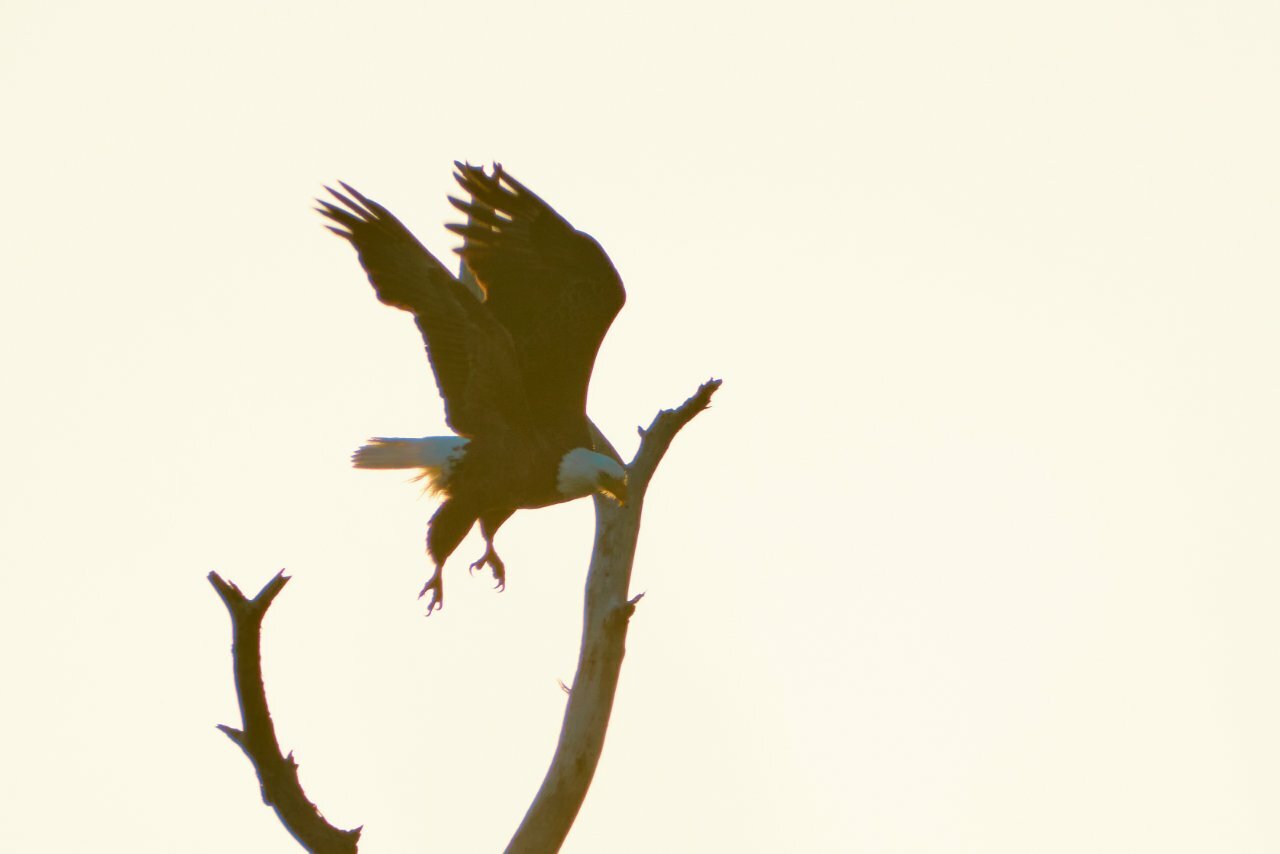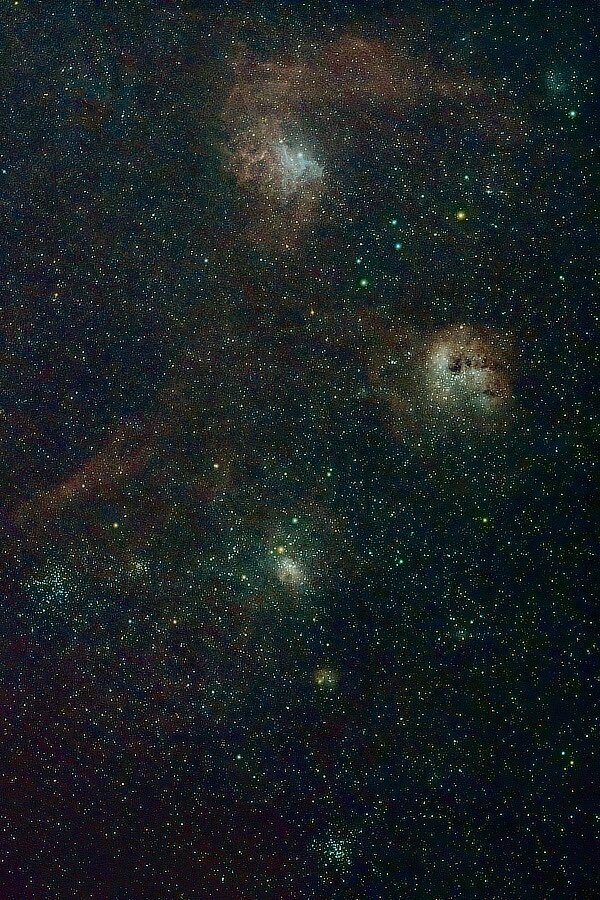Leaderboard
Popular Content
Showing content with the highest reputation since 03/29/2024 in Posts
-
2 points
-
2 points
-
Advertisement
jerryy and one other reacted to Astigmatism for a topic
What is most ironic about this is that there must be many of us here that would be interested in significant ads about the products we're discussing. I would be. I normally hate ads, but relevant ones here would actually be somewhat welcome. What are the recent new Fuji product announcements? Is anybody offering a sale? How about 3rd party products? I mean, I actually want to spend money, more or less.2 points -
Astro-photography (open thread)
MARRIEDGUY9 and one other reacted to jerryy for a topic
But Sirius-ly Dog Star... Of all the neat and interesting or just regular things to see in the night sky, Sirius, The Dog Star in constellation Canis Major, is considered the easiest to find, because it is the brightest star in the night sky. Being close to the Orion Constellation also helps make it easy to find. Sirius is going to continue getting brighter because it is moving toward us, in about 60,000 (60.000) years it will be a very close neighbor. (This is the equivalent of 28 minutes, 20 seconds worth of exposure). If you can find Sirius up high enough in the sky, then just below it you should be able to find Messier Object M41, The Mini Beehive Cluster (related in name to Messier M44 the Beehive Cluster). Sirius and M41 are companions, tracking together across the night sky. There are some other interesting objects, clusters and nebulae in that region, probably the most famous is Sh2-308, Dolphin Head Nebula. Canis Major (Big Dog): https://www.constellation-guide.com/constellation-list/canis-major-constellation/ Sh2-308: https://astrocat.info/sharpless-308-the-dolphin-nebula/ Sh2-304: http://galaxymap.org/cat/view/sharpless/304 Cr-121 (Collinder Open Cluster): https://in-the-sky.org/data/object.php?id=20726 Messier M41: https://www.go-astronomy.com/messier.php?Messier=M41 Sirius: https://www.space.com/21702-sirius-brightest-star.html Sirius: https://en.wikipedia.org/wiki/Sirius2 points -
I can’t say for sure if will remove it but I’d try a dedicated sensor cleaning kit, or if you have a local shop that does repairs they might offer cleaning services too.2 points
-
Introduce Yourself
jerryy and one other reacted to TOPSHELFJUNIOR for a topic
Fuji shooter. X-Pro 1, X-T30, X-T4, XF10, but currently on the X-T5. Based in Los Angeles. IG: @TOPSHELFJUNIOR2 points -
2 points
-
Fixed. Thank you. The act of adding items to MY MENY activates it, then it is prioritised when you press the MENU button. I removed all the MY MENU items, which deactivated MY MENU, now the last Menu item is remembered.1 point
-
So I ended up getting and X-H2 over the X-T5 because of a good deal that came up. Needing to buy a card, I needed to figure out, what is the real impact of a card's speed for photos? In particular, I'm going to test how shooting at 15 FPS will differ between: Angelbird - AV PRO CFexpress B SE - 512 GB and Angelbird AV PRO CFexpress SX - 160 GB. How many shots can I get off before buffer fills, and how long does it take for the buffer to clear? MOP: X-H2 Factory rest, card formated, no lens (body cap on), performance boost on, manual exposure, mechanical SS @ 1/8000, IS off, Shoting RAW Compressed Lossless with only one card in. Held shutter release till buffer filled, and used stop watch to see how long for buffer to clear. Subtracted two frames from total taken as that's how long it takes me to release the trigger once the buffer is full. Repeat 2x for sanity check. ***TEST RESULTS*** ~~~64GB Lexar Pro SD 150MB/s~~~ 75 shots to fill buffer, 36 Seconds to clear it ~~~Angelbird AV Pro SX 160GB~~~ 251 shots to fill buffer, 5 Seconds to clear it .~~~Angelbird AV Pro SE 512GB~~~ 232 shots to fill buffer, 4 Seconds to clear it ***Conculsion*** If burst shooting an X-H2 at 15 FPS is your thing, buy the Anglebird 512GB SE for the same price as the 160GB SX. Below is a shot on X-T2 w/ the Fuji 70-300. I manged to fluke it off with a dead battery by turning the camera off and on again, and squeezing three more shots out (this was the last shot). Ta for now!1 point
-
It is really easy to find out if the wifi is on. Your computer or tablet or cell phone will have a network settings dealing with wifi, bluetooth, ethernet or “other”. Open that up and go into the section for wifi, and take note of which networks are listed. Turn on the camera and keep watching the list of networks. If your camera’s wifi is turned on, a new network should suddenly show up in your computer/tablet/phone’s network listings. Now go into the camera’s menus and start a wireless connection (the x-app or camera remote app can help you with this). You should see a network show up now. It is not hidden because it has to be visible so that your computer/tablet/phone can join the camera’s network to transfer images. Turn the camera off and that network should disappear. Turn the camera back on and see what happens.1 point
-
1 point
-
1 point
-
1 point
-
Hello from Iowa
jerryy reacted to FrankWeiser for a topic
I own the Fuji X-T1 and X-H1. I own several Fuji lenses but I tend to use 3rd party vintage manual glass which I find quite enjoyable to use. I'm testing a photo here taken from my Flickr account that showcases the Tokina 100-300mm Zoom lens with 1.4 extender. [url=https://flic.kr/p/2og3ghr][img]https://live.staticflickr.com/65535/52678730517_54489efae3_k.jpg[/img][/url][url=https://flic.kr/p/2og3ghr]300mm 1.4 blue jay[/url] by [url=https://www.flickr.com/photos/92395202@N07/]frankweiser[/url], on Flickr1 point -
Hi everyone I find why it did that, it was because I shot with the flash at the second curtain.1 point
-
FIRST TIME SHOOTING AN X-T5.
George_P reacted to TOPSHELFJUNIOR for a topic
Also rocking the 27mm 2.8 lens for the VERY first time. The combo shocked me !1 point -
X-T5 Cleaning Mistake
Astigmatism reacted to BobJ for a topic
Because the sensor assembly is moved electrmagnetically. When there is no power it is essentially free moving.1 point -
Ahoy ye hearties! Hoist ye yon Jolly Roger and Cascade away. NGC 1502 The Jolly Roger Cluster: This is the equivalent of 43 minutes, 40 seconds of exposure. NGC 1502 is a neat little cluster located in the Camelopardalis Constellation. This region of space was thought to be fairly empty by early astronomers, but as you can see, there is a lot there. Kemble's Cascade (a.k.a. Kemble 1) is named for Father Lucian Kemble, a Canadian Franciscan friar who wrote about it to Walter Scott Houston, an author for the Sky And Telescope magazine. Houston named the asterism for Fr. Kemble and the name "stuck". NGC 1501 is the Oyster Nebula. A longer focal length telescope is needed to bring this one into good viewing range, but it is well worth the effort. NGC 1502: https://skyandtelescope.org/online-gallery/ngc-1502/ Camelopardalis Constellation: https://en.wikipedia.org/wiki/Camelopardalis Kemble's Cascade (and NGC 1501: The Oyster Nebula): https://www.constellation-guide.com/kembles-cascade/ Arrrrrr Matey.1 point
-
1 point
-
1 point
-
1 point
-

landscapes with fuji x
jerryy reacted to MARRIEDGUY9 for a topic
1 point -

Fuji Birds
jerryy reacted to MARRIEDGUY9 for a topic
1 point -
I have the same issue on my X-Pro 1 and can no longer use lenses with no aperture ring. I contacted Fuji Tech several years ago and was told the camera would have to be disassembled and the mother board replaced at a couple hundred dollars. I was also told Fuji would no longer be repairing X-P1 as they stopped making parts for them. I did not check to see if any third party repair shops could fix it. Everything else on the camera works fine.1 point
-
1 point
-
Hello, If you look in the top right-hand corner of each posting, there should be three dots in a row, like this —> … <—, click on them and after a moment or twelve, a small menu should drop down from the dots, the last entry in the menu is ‘Edit’. Choose that and after a moment or three you should be in edit mode for that entry. Note: Only you can edit your entries.1 point
-
X-PRO 1 in 2024 ?!
RCC reacted to TOPSHELFJUNIOR for a topic
Still goin' strong !!! Manual focus was a dream to use.1 point -
It sounds like you have Long Exposure Noise Reduction turned on in your menu settings. LENR is a way of removing hot pixels and some other types of noise that can creep into the images when you are taking long exposures. You can turn it off in the menu and leave it off and get twice as many exposures than you were getting. p.s. Welcome to the forum.1 point
-
It usually takes about a week or a few days longer. After taking the battery out, turning the power switch to ‘On’ has been mentioned as helping speed things up, I do not know one way or another about that, but I should mention it.1 point
-
xf 100mm - 400mm fringe
Astigmatism reacted to jerryy for a topic
Yup, catadioptric lenses wipe out CA from your images, they have a few drawbacks; the design means they start off at telephoto focal lengths with fixed apertures and there is a teeny tiny “hole” in the image middle (this is not a big issue, it is usually never noticeable, but it is there). They also tend to be a little heavy and occasionally need adjusting to keep the mirror part collimated. They give you pretty good images. As I recall, Minolta made a catadioptric lens that could auto focus, this was taken over by Sony who still makes the lens for one of their bodies, but no one else makes one. There are several manual focus ones for Fujilfilm’s X-mount bodies. Achromatic lenses do remove red-blue fringing, you can often find these types in those screw on macro-diopter lenses or in old box landscape cameras. But they have a problem with green fringing as it is not corrected at all. To get all three fringings, red-blue-green, folks have shifted over to Apochromatic designs. These are found in high end telephoto camera lenses and more often in refractor telescopes — the triplet design. They currently tend to be expensive.1 point -
xf 100mm - 400mm fringe
jerryy reacted to Astigmatism for a topic
What jerryy said. Couple more ideas: putting color filters in front of the lens can help. There are "straw" filters that look very pale yellow, which knock out the shortest blue wavelengths without changing most subjective colors much. Maybe somebody also makes a filter that knocks out the longest reds, also without changing colors much. And, if you can play a little with composition -- I mean, if your subject lends itself to this -- you can orient the edges with the biggest brightness contrast to be radial in your image, rather than circumferential. Chromatic aberration only happens radially with respect to the optical axis (e.g. the photo center if it's not cropped. I *think* there are many optical systems that are achromatic, specifically being corrected for two widely spaced wavelengths, that will tend to have green versus purple (red + blue) fringes. Picture a graph of the effective focal length as a function of wavelength, and these systems will be a smile or a frown. For some purposes (such as astrophotography) you can get much fancier and more costly optical systems that are apochromatic, corrected for three wavelengths, whose graph will slope up-down-up or down-up-down. Going beyond that, systems based entirely on mirrors have no chromatic aberration. I guess -- don't know this for sure -- that camera lenses using both mirrors and refraction, catadioptric lenses, could have less chromatic aberration than lenses without mirrors. These are generally fixed focal length, fixed aperture lenses. There are some 3rd party ones available for Fuji X, though I don't remember seeing any that are autofocus.1 point -
xf 100mm - 400mm fringe
Astigmatism reacted to jerryy for a topic
The bluish fringing is chromatic aberration. It is a fact of life for photography, especially for high contrasty images taken with zoom lens, and quite often for images taken with zoom lenses set to wide open apertures, maximum or minimum zoom length in high contrasty scenes. If you have software for processing images, or for converting raw images, look for tools that reduce CA, often called color fringing. With practice you may be able to reduce it to not being noticeable. There are lots and lots of tutorials on the internet about reducing CA. If you only shoot jpeg images, try stopping the lens aperture down some, or kick the zoom back a little. CA tends to be worse at the edges rather than the frame middle for what that is worth. Avoiding high contrasty scenes does work, but that is not realistic, so try to get it to the level where you can be happy with the image and do not lose sleep over it. The CA in the image you posted is not bad at all, you almost have to start pixel peeping, with a little work you can get rid of it, Your lens seems okay, based on this shot. p.s. Welcome to the forum.1 point -
Fuji X aperture ring
Astigmatism reacted to jerryy for a topic
One way you can tell is if the ring continually rotates or has hard stops. If the ring rotates all the way around and keeps going, it is by-wire or electronic. If it has hard stops, it is mechanical. The XF-14mm f2.8 lens is a mecha lens.1 point -
Fuji X aperture ring
Greybeard reacted to Astigmatism for a topic
Not even manual focus on the FX 14 mm f/2.8 R, with the clutch? You engage manual focus by sliding the focus ring rearward, which reveals a distance scale that you can read against classic DOF markings for different apertures. I have this lens, and just tried turning the focus ring with the lens not mounted on the camera. Looking into the rear of the lens, I see something shifting in re the aperture stop as seen through the glass. Not sure but I think this lens design might be a dozen years old. Sliding the focus ring forward disables it and makes the lens autofocus. I'm not disagreeing, I'm just curious. I have wondered what's going on in there.1 point -
1 point
-
1 point
-
Astro-photography (open thread)
MARRIEDGUY9 reacted to jerryy for a topic
"Will you walk into my parlour?" said the Spider to the Fly” * Back on page one of this thread, there is a post showing a quick exposure isolating IC 405, The Flaming Star Nebula. That section of the sky has so many things to see it is almost a tourist-oriented nature-viewing area. Some of the highlights include tadpoles, starfish, spiders, flies, pinwheels and more. This is the equivalent of just about 56 minutes of exposure. * The Spider And The Fly by Mary Botham Howitt Messier Object M36 (The Pinwheel Cluster): https://www.messier-objects.com/messier-36-pinwheel-cluster/ Messier Object M38 (The Starfish Cluster): https://www.go-astronomy.com/messier.php?Messier=M38 IC 417 (The Spider Nebula): https://www.nasa.gov/image-article/spider-nebula/ NGC 1931 (The Fly Nebula): https://waid-observatory.com/ic417-2020-01-19-HOO.html IC 410 (The Tadpoles Nebula): https://skyandtelescope.org/online-gallery/ic410-the-tadpoles-nebula-a-star-nursery/ And, of course, IC 405 (The Flaming Star Nebula): https://theskylive.com/sky/deepsky/ic405-flaming-star-nebula-object Will the spider once again coax the fly into its parlour? Will the fly escape the machinations? Their exchange is in the sky for us to ponder...1 point -

Shooting with X100 series again
Antoinette reacted to monflores11 for a topic
I'm happy to be back after a long hibernation. I have the first X100 in silver and black limited edition, the latter of which was stollen in Brussels in 2013. Then I got the X100T which I sold since it did not meet my expectations. Then came X100V which I haven't had a chance of holding. Then this X100 VI, and without hesitation pre-ordered it. I expect to have it anytime soon. I can't wait to shoot again with a Fuji X series, this time with X100 VI. I'm a trying hard photo hobbyist who loves to shoot streets. I do shoot with Nikon DLSR (D700, D600, D810) as well for paid gigs and events. But my love for the X series lingers. Sharing to those interested my PBase Photo gallery: https://pbase.com/monflores1 point -
1 point
-

black and white (open thread)
George_P reacted to MARRIEDGUY9 for a topic
1 point -
1 point
-
1 point
-
1 point
-
1 point
-
1 point
-
Thinking about the 16mm 1.4 for the X-T5...not on the "list"
Erik Svec reacted to SGinNorcal for a topic
Don't own and haven't used the 16mm. But I wouldn't take to much stock in "the list". The only two I have on it are the 33f1.4 and 23f2 and they do produce sharp images. I also have the 10-24, 16-80, 55-200 and they are excellent lens as well. Also, while the 18mm1.4 prime is on there, the 18-55 is not and most people find the 16-80 to have equal or better detail than the 18-55. Its usually safe to assume that a compact zoom is going to have slightly lower IQ at the same focal length as a prime. I haven't seen anything the disrupts that simplification. For me the bulky zooms, 16-55 and 50-140 don't fit the form factor I am after and I'm not going to lug them around so I don't have them. The compact zooms fulfill a need when you know you will be shooting with a variety of focal lengths or simply don't know what to prepare for and don't want to be constantly swapping lenses. In my case, the 10-24 is the most extreme example. If I pixel peep, its not that impressive. But shoot a beautiful wide scene at 10 to 12mm and it can provide an awesome shot you wouldn't get with a more general purpose lens. Maybe find a used f2 lens with the 18-55 range that suits you and play around with it. You will see what I am referring too. Picking a lens is always a compromise.1 point -
1 point
-
1 point
-
1 point
-
Your pictures are simply stunning. Just beautiful work. I very recently took many photos at my daughter's wedding, exclusively using my X-T1 (with v3.1 FW). I was extremely happy with the results (as was the bride) and I was able to provide her with an early look exclusively with SOOC JPGs, which gave me more time to do some extra work in Lightroom on the RAWs. The images required very little or sometimes no PP work and the camera did a fantastic job. To be fair, the entire event was shot in a brightly lit room (natural light through windows), so flash was basically unnecessary. Fuji's one weakness is in the area of flash support, and I might have been a little less enthusiastic about the results if the wedding had taken place in a poorly lit venue. Either way, I fully agree with your comment about the future of DSLRs. There certainly are none in my future for sure. Thanks so much for sharing.1 point








-15.jpg.473a316a228a52bbe4b69d9fa4574881.jpg)






























